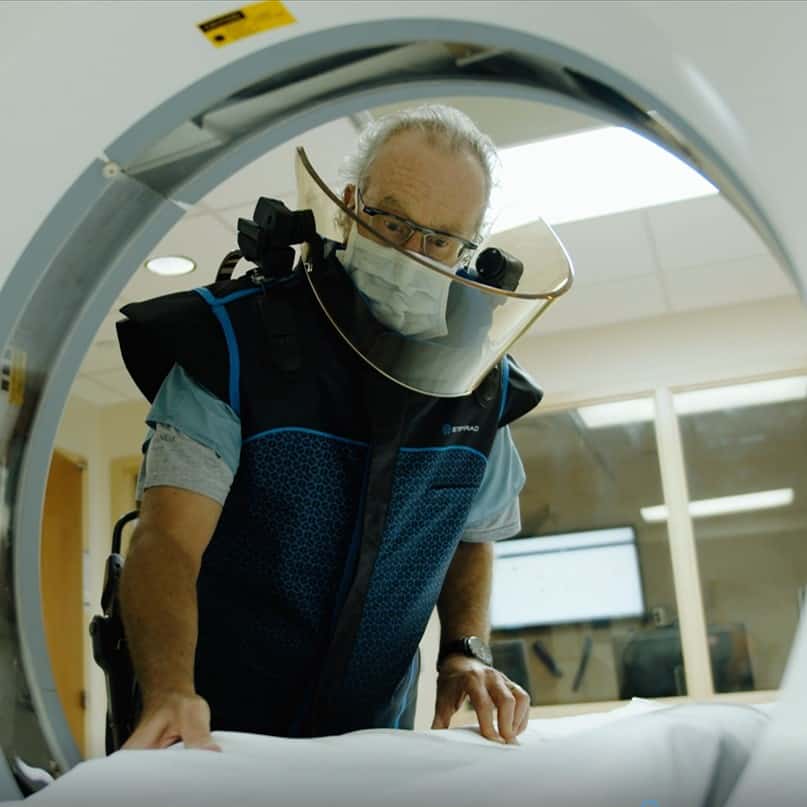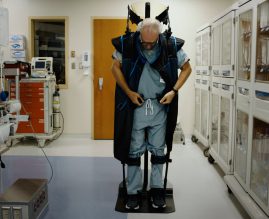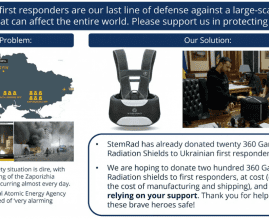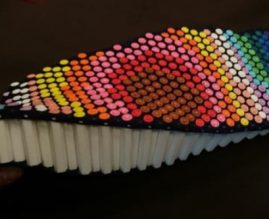Moving Beyond the Lead Apron
03.11.21 | Thursday | Nofit Amir
For nearly a century, surgical lead aprons or vests have been standard medical radiation protection garb for both patients and physicians.
Though they provide some defense, lead aprons do not always protect the most vulnerable areas exposed to dangerous radiation.
The heavy and cumbersome design of lead aprons can also cause orthopedic issues for physicians and their medical teams.
This strain leads to muscle fatigue during surgeries and overall on-going pain for practitioners.
Benefits of the Lead Apron
Due to its high density and high atomic number, lead can effectively weaken certain kinds of radiation like X-rays and gamma rays.
When the radiation attempts to pass through lead, its electrons absorb and scatter the energy. Over the years, lead has been used in aprons, gloves, eyeglasses, and shields. It’s a great X ray protection from the implications of these rays.
It is important to note that though this element is heavy and durable lead protection needs to be hung appropriately and stored to avoid cracks and wear and tear to the material. Lead aprons need to be examined at least once a year by a radiation safety specialist and replaced if necessary.
Limitations and Detriments of Lead Aprons
Despite the U.S. Radiologic Technologist Health Study from 1983-1998, which showed increased breast cancer incidence among female radiographers, the standard lead apron has not changed significantly in almost a century. Lead aprons are many times thinner on the sides and do not prevent 100% of the radiation from scattering into the chest. Most lead apron protection ends at the neck and leaves the head and thyroid exposed to radiation dangers. Interventionalists annual head exposure (20-30 mSv) is nearly ten times higher than their whole-body exposure.
In addition to the posed radiation risks, long-term use of protective lead aprons correlate with neck, spine, hip, and knee injuries. Adequate lead apron garments can weigh up to 17 pounds––adding unnecessary stress to the user’s neck, shoulders, and spinal column. Physicians have reported muscle fatigue while toting around a lead vest in and out of surgical rooms. This fatigue can affect precision and focus during procedures while contributing to spinal disc disease prevalence among interventional cardiologists.
The New Standard in Radiation Protection
Building on the history of the lead apron, engineers have discovered ways to improve the user experience of wearable radiation protection. One way is via an exoskeletal system that supports the weight of protective lead shielding, the StemRad MD is a radiation protection solution that suits the user in a mobile exoskeleton. While keeping radiation doses as low as reasonably achievable, StemRad MD protects vulnerable tissues and the head without the pain and fatigue from wearing outdated lead aprons.
A protective visor prevents radiation scatter to the head of the operator while side protection is maintained at 0.5mm without compromise. With the weight of the lead supported by the exoskeleton, this device offers the utmost radiation protection with 100 percent less load-bearing pain.
To learn more about the science behind StemRad MD, visit stemrad.com/medical.

Writes content for StemRad’s website, social media, and newsletter. She is an advocate with over twenty years of experience of writing high-end content in academic and industrial settings.




